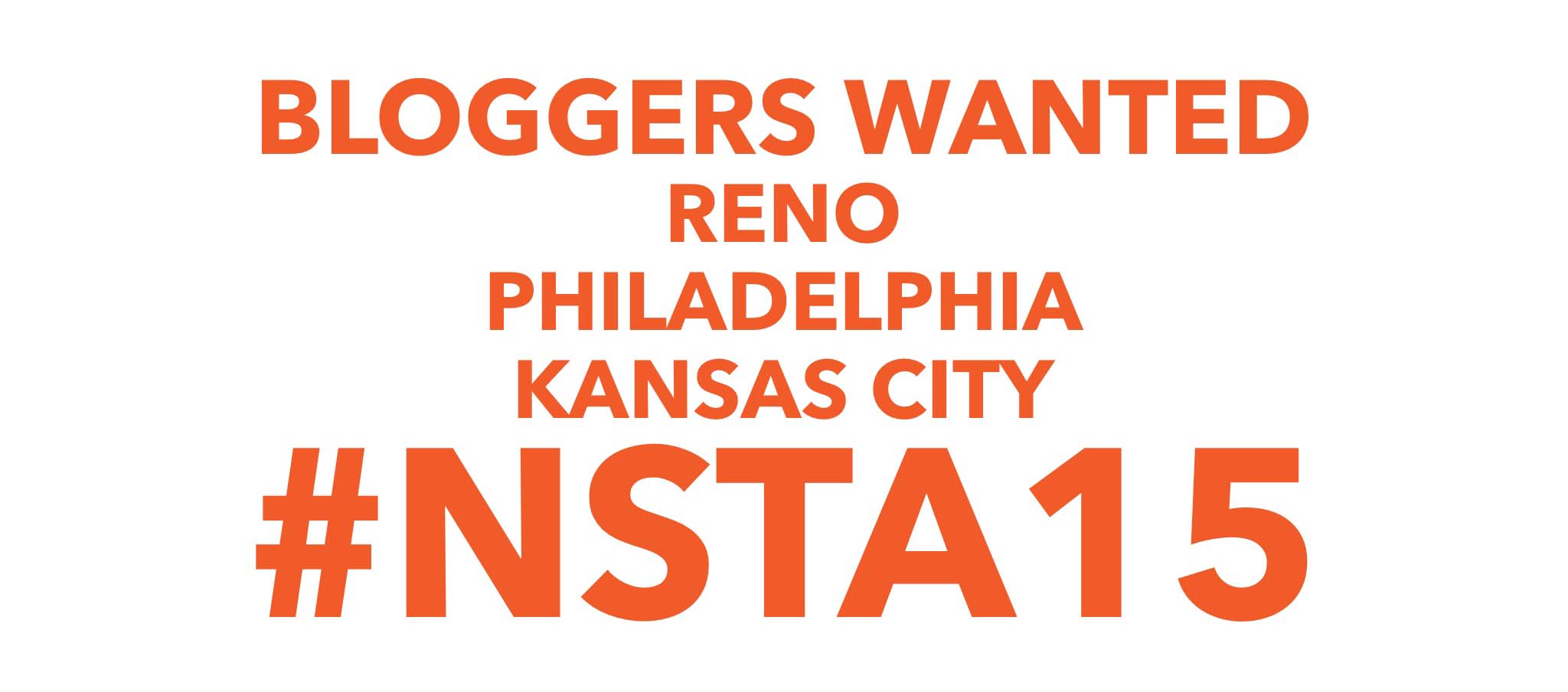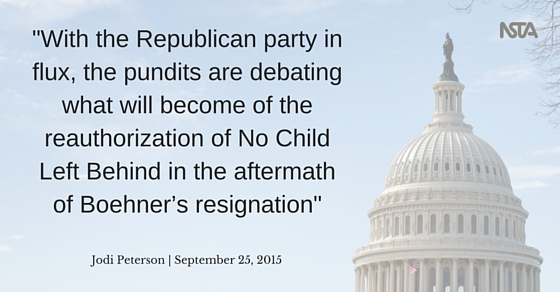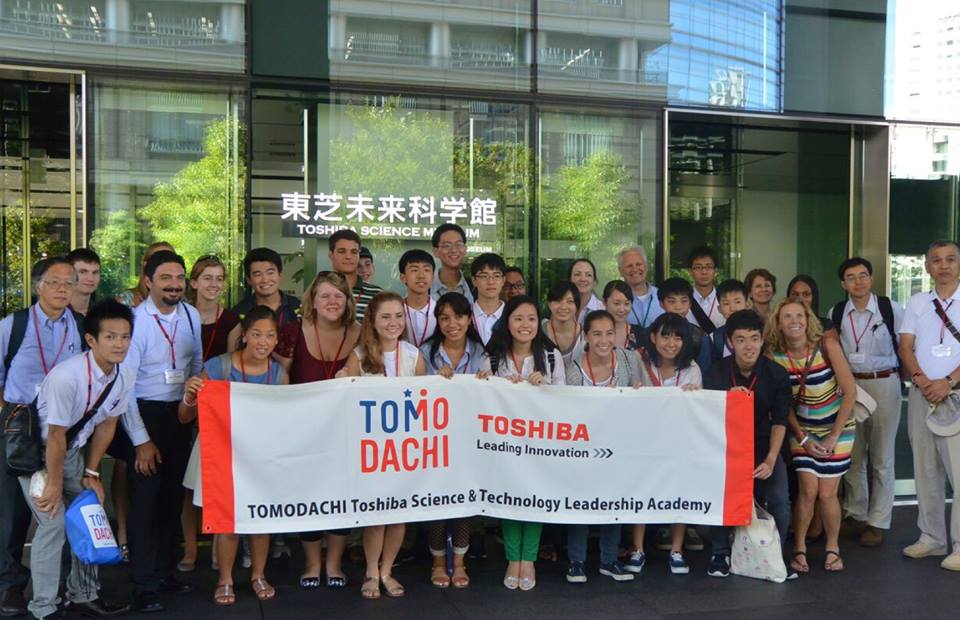The "E" in STEM
By Peggy Ashbrook
Posted on 2015-09-29
 Teaching a “STEM” class or curriculum means addressing each letter in the acronym. In a rigorous STEM curriculum, those four areas of teaching and student learning—Science, Technology, Engineering and Mathematics—will be observable every day.
Teaching a “STEM” class or curriculum means addressing each letter in the acronym. In a rigorous STEM curriculum, those four areas of teaching and student learning—Science, Technology, Engineering and Mathematics—will be observable every day.
Technology
The technology piece may be the easiest to incorporate because the technologies for writing and drawing have been staples in teaching young children for a long time. Children document their observations and thinking with their drawings and writing. Some programs fully integrate newer technologies such as cameras, computers, and easily portable devices for recording and documenting. “Technology and Interactive Media as Tools in Early Childhood Programs Serving Children from Birth through Age 8,” is a joint position statement issued by the National Association for the Education of Young Children (NAEYC) and the Fred Rogers Center for Early Learning and Children’s Media at Saint Vincent College.
Mathematics
Early Childhood Mathematics: Promoting Good Beginnings, the 2010 joint position statement of the National Association for the Education of Young Children (NAEYC) and the National Council of Teachers of Mathematics (NCTM), describes high quality mathematics education.
Science
The National Science Teachers Association’s (NSTA) position statement on Early Childhood Science Education was endorsed by NAEYC in 2014. The principals and declarations clarify how to teach science concepts and topics.
Engineering
Early childhood teachers need professional development to prepare to teach engineering concepts. The American Society for Engineering Education describes professional development that addresses the fundamental nature, content and practices of engineering.
Guides such as STEM Sprouts Teaching Guide by the Boston Children’s Museum and the MA Board of Education’s Guidelines for Preschool Learning Experiences provide direction for intentionally including engineering teaching.
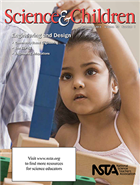 Learn how preschool teachers in Hartford, Connecticut implemented a unit on the topic of Building Structures (Chalufour and Worth 2004) in mixed-age classrooms of three-, four-, and five-year-old students, in “Gimme an E! Seven strategies for supporting the “E” in young children’s STEM learning” by Cynthia Hoisington and Jeff Winokur. This article in the September 2015 Science and Children describes how instructors and coaches in the professional development program Cultivating Young Scientists facilitated teachers’ preparation of the environment by planning space, materials, and time for building explorations. Hoisington and Winokur emphasize that preschool teachers need opportunities to participate in and reflect on their own collaborative building explorations. So grab a set of blocks, try building a tower and then reflect on how to build a better tower. Write some productive prompts to use when children build structures, to invite them to raise questions, and identify, address, and solve building challenges.
Learn how preschool teachers in Hartford, Connecticut implemented a unit on the topic of Building Structures (Chalufour and Worth 2004) in mixed-age classrooms of three-, four-, and five-year-old students, in “Gimme an E! Seven strategies for supporting the “E” in young children’s STEM learning” by Cynthia Hoisington and Jeff Winokur. This article in the September 2015 Science and Children describes how instructors and coaches in the professional development program Cultivating Young Scientists facilitated teachers’ preparation of the environment by planning space, materials, and time for building explorations. Hoisington and Winokur emphasize that preschool teachers need opportunities to participate in and reflect on their own collaborative building explorations. So grab a set of blocks, try building a tower and then reflect on how to build a better tower. Write some productive prompts to use when children build structures, to invite them to raise questions, and identify, address, and solve building challenges.
Mentoring a colleague
By Mary Bigelow
Posted on 2015-09-29
 My principal asked me as the science department chair if I could help one of our new teachers. From the beginning, she’s having issues with classroom management and organization. I’m willing to do what I can to help her, and she is open to this help. Do you have any suggestions on what I can do? —L., Rhode Island
My principal asked me as the science department chair if I could help one of our new teachers. From the beginning, she’s having issues with classroom management and organization. I’m willing to do what I can to help her, and she is open to this help. Do you have any suggestions on what I can do? —L., Rhode Island
If your school does not have a formal mentoring program, it seems like you can create your own plan. As a mentor you can be a role model, a good listener, a provider of feedback, a source of suggestions and resources, a shoulder to lean on, and someone with whom to bounce around ideas. As a colleague, you’ll want to be helpful but not judgmental or evaluative.
Even successful student teachers can get a rude awakening in their first year on their own, when they are responsible for their classes from the beginning. They don’t have the advantage of stepping into an established situation, in terms of setting up a classroom, lab equipment inventories, safety procedures, and routines. She may be trying to learn new content, and if she has more than one subject to prepare for, it can be overwhelming.
You could start with an informal conversation. “I understand that you have some challenges with classroom management. This happens to everyone. I had some real difficulties, too.” She may not realize that even experienced teachers face new situations every year, so it may help to share some of your own current challenges and how you’re working on them.
If possible, it would be good if you could observe this teacher—informally, of course. In addition to watching the teacher, consider what the students are (or are not) doing and how the classroom is set up. You could ask questions as discussion starters: What worked well for you when you were student teaching? What are your greatest challenges? What do you think about…? Did you notice today when…? Have you ever considered…? Her responses and your observations could be the start of an action plan.
In addition to your suggestions, social media would also be a good way for her to get new ideas.
From my mentor, I learned that the most important part of classroom management is having routines in place. This frees up time for more important topics and activities, rather than dealing with discipline or logistic issues. Ask what routines she has in place for the beginning and end of the class period or when students transition between activities. These are the prime times for disruptions, and it is important for students to be engaged and to know what is expected of them. Share some suggestions and resources for routines that work for you, ask her to try them for a week or two, and debrief on the results.
A lot of class time can be spent accessing materials and getting started on activities. You could suggest she
- Have a tray for each lab group to make it easier to organize and count materials and make sure everything is in place for the next class.
- Assign seats, lab groups, and roles for lab group members to lessen the time-consuming drama of students deciding where to sit or with whom to work.
- Designate where to turn in assignments and equipment and label everything, including the shelves or tables to organize materials students need during class.
- Color-code as a way to organize materials for different classes or subjects.
If classroom management and organization are concerns, you should also ask her about safety issues and how she deals with students who are disruptive and off-task during labs. Share with her what you have found effective.
It also could be helpful for her to observe other science teachers with the goal of understanding how they organize their students, learning time, and class materials. Since the school year has started, it will take some time and effort to “reboot” and introduce new routines. If her classes are out of control, you could suggest she postpone labs with safety concerns until students are up to speed on the new routines and understand the importance of safety.
Some of your suggestions would be second nature to a veteran teacher, but to a novice they can be life savers!
Feel free to share and discuss some previous Ms. Mentor blogs on topics such as
- Channeling Student Enthusiasm
- Classroom Seating Arrangements
- Struggling With Paperwork
- Bell-to-bell Learning
- Connecting with Students
Photo: http://www.flickr.com/photos/jjlook/7152722/sizes/s/in/photostream/
 My principal asked me as the science department chair if I could help one of our new teachers. From the beginning, she’s having issues with classroom management and organization. I’m willing to do what I can to help her, and she is open to this help. Do you have any suggestions on what I can do? —L., Rhode Island
My principal asked me as the science department chair if I could help one of our new teachers. From the beginning, she’s having issues with classroom management and organization. I’m willing to do what I can to help her, and she is open to this help. Do you have any suggestions on what I can do? —L., Rhode Island
#NSTA15 Area Conferences on Science Education: Bloggers Wanted
By Lauren Jonas, NSTA Assistant Executive Director
Posted on 2015-09-26
Planning to attend one of the National Science Teachers Association (NSTA) area conferences on science education this fall? If so, consider writing or making a video about your experience. What do you get out of it? Our gratitude, admiration from your peers, and an #NSTA15 conference tweetshirt!*
The votes have been tallied and the winning tweetshirt is: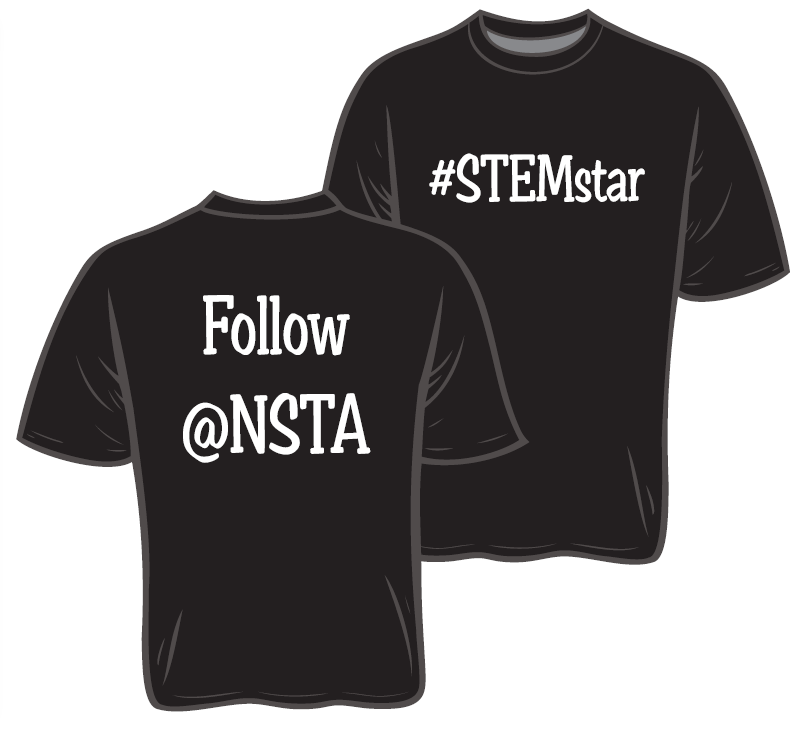
We love to see the conferences through the eyes of attendees. Below are a few of our favorites from earlier conferences. Read them to get a sense of what’s in store for you if you attend, and get inspired to blog/vlog yourself!
- Hashtag WORTH IT
- A View of #NSTA15 from Down Under
- NSTA14 Boston Conference Summary
- Building NGSS Capacity at #NSTA15
- It’s All About the Hashtag for @2footgiraffe
- #NSTA15 | Your Science Teaching Superpower
- #NSTA14 Long Beach Stories
The mission of NSTA is to promote excellence and innovation in science teaching and learning for all.
NSTA Conferences on Science Education
2015 Area Conferences
2015 Fall NGSS Workshops
2015 Virtual Conference
2016 National Conference
2016 STEM Forum & Expo
Follow NSTA
*While supplies last, shirts will be given to bloggers ONSITE ONLY at our 2015 area conferences on science education. Bloggers: Tweet your blog/vlog title and link, tag it #NSTA15, and then come to the #askNSTA booth in the Exhibit Hall in the convention center to claim your shirt.
House Speaker Boehner Resigns, What Now for No Child Left Behind?
By Jodi Peterson
Posted on 2015-09-25
On Friday, September 25, House of Representatives Speaker John Boehner resigned from Congress effective at the end of October.
This action caught everyone by surprise. With the Republican party in flux, the pundits are debating what will become of the reauthorization of No Child Left Behind in the aftermath of Boehner’s resignation (read more here), with many calling the ESEA rewrite “toast.” It will be harder for Rep. Kline, who is also retiring at the end of 2016, to get the support necessary to get a conferenced bill acceptable to the White House thru the House of Representatives.
Boehner, one of the original four architects of the original No Child Left Behind legislation (Rep. Boehner, former Rep. George Miller, D-Calif., late Sen. Ted Kennedy, D-Mass., and former Sen. Judd Gregg, R-N.H.) supported the House ESEA bill, the Student Success Act (HR 5), and is a proponent of voucher programs.
Expect much more in the weeks ahead as lawmakers debate the end of the fiscal year (and a possible government shutdown) as this story continues to develop.
NSTA and NCTM Call on Congress
The National Council of Mathematics and NSTA sent a letter to House and Senate appropriations leaders last week, calling on them to accept the Senate funding level of $141,299,000 for the Department of Education Title II B program as they negotiate FY 2016 funding for federal education programs (read the letter here).
The funding for this program, and other federal education programs, will be at stake in the next few weeks as Congressional leaders finalize a FY16 budget; strategies include shutting down the federal government on Oct. 1 if they cannot come to an agreement on a budget bill for the fiscal year. Read more.
Jodi Peterson is Assistant Executive Director of Legislative Affairs for the National Science Teachers Association (NSTA) and Chair of the STEM Education Coalition. e-mail Jodi at jpeterson@nsta.org; follow her on Twitter at @stemedadvocate.
The mission of NSTA is to promote excellence and innovation in science teaching and learning for all.
Follow NSTA
Teaching Science at a Museum Magnet School
By Debra Shapiro
Posted on 2015-09-25

Fifth graders from Ortega Elementary Museum Studies Magnet School in Jacksonville, Florida, use a hands-on wet lab at the Marine Science Education Center in Atlantic Beach, Florida, one of Ortega’s seven museum partners. Photo credit: ANN MCGLAUFLIN
Museums and school districts around the country have partnered to create museum magnet schools, which combine formal and informal learning. These schools offer some advantages for science classes. “Partner[ing] with The Discovery Museum and Planetarium lends itself to many opportunities exclusive to a ‘space’ museum,” says Janine Walsh, seventh- and eighth-grade science teacher at Interdistrict Discovery Magnet School (IDMS) in Bridgeport, Connecticut. The museum “has exposed my primarily urban students to events that they would not experience[in] their neighborhood schools,…[including] teleconferencing with NASA scientists from Operation Ice Bridge, a polar ice cap survey mission, [and] live viewing of the Orion Spacecraft.”
“Museum staff [co-teach] at the school, [and] our student coaches and interns [work] with younger children at the museum,” says Claire Gold, IDMS founder. She also notes that “most elementary teachers are weak in science and need expert, knowledgeable support” that museums can provide.
“A lot of people have a misconception about the word ‘museum;’ they associate it with having no interaction with the exhibits, just looking,” says Josh Hunter, seventh-grade science teacher at Moore Square Magnet Middle School in Raleigh, North Carolina. “Our idea is it’s all about interaction. [For example,] our students do experiments with scientists at the North Carolina Museum of Natural Sciences.”
“We’re able to take students to…an active research museum, and [they] see how the science they learn…is useful in the real world,” says Krista Adair, sixth grade science teacher at Moore. “We scaffold so at the beginning of the year, they do little experiments and some data tracking. Then they can see how it works in the museum setting, [which has] a lot more resources and equipment.”
Last year, “we took all 500 [Moore] students to the museum” for an event featuring “scientists with many different research areas and talents,” says Julianna Martinez, seventh-grade science teacher. “We [also] had an opportunity for young scientists to come to our school and present their work.” At these events, students heard from scientists who have succeeded despite having disabilities. “These kinds of experiences really touch the students,” she observes.
Museum magnet teachers cite the benefits of assessing students’ knowledge through the exhibits they create about what they learned. “Our students create exhibits that are more than just a bulletin board item. They try to make them museum-quality,” says Ann McGlauflin, fifth-grade science teacher at Ortega Elementary Museum Studies Magnet School in Jacksonville, Florida. Students’ exhibits “integrate more than just the topic” and can include “language arts, art, and music,” and “more critical-thinking skills [are involved], such as communication and language skills,” she contends.
For the science fair last year, her students created a large “wall quilt,” with each block illustrating a student’s project. “The artistic representation made them think at a different [and more creative] level,” she observes.
McGlauflin’s students scored two percentage points higher on state tests last year. “I knew it wasn’t a fluke; what we’re doing seems to be working,” she asserts.
“The magnet museum format has helped students understand the importance of reading and writing in English class as well as in science class,” says Raji Menon, grades 6–8 science teacher at New York City’s Museum Magnet School. After researching their topics and writing reports, four of her students presented their projects at the American Museum of Natural History last June.
“My students felt so proud. They were talking about their projects like experts—taking ownership of their own understanding,” says Menon. The museum gave them the opportunity “to explain their work to other people besides their teachers and classmates.”
Support for Teachers
Seven area museums work with teachers from Normal Park Museum Magnet School in Chattanooga, Tennessee. “We meet with museum partners two or three times a year [to] talk about what studies are coming up. They give us ideas, and we collaborate,” says Kara Semtner, sixth-grade science teacher.
Erin Woodrow, seventh-grade science teacher at Normal Park, worked with an art teacher on a unit that engaged students in “looking at how an artist conveys force and motion” in an exhibit at Chattanooga’s Hunter Museum of American Art. “Though the museum’s paintings and sculptures are stationary, they convey motion,” she maintains.
When Trey Joyner taught science at Normal Park, he was able to take “a backstage tour of the exhibits” at the Tennessee Aquarium. “The aquarium was breeding new species of jellyfish… The jellyfish exhibit fit right into our content,” he notes.
The aquarium offers courses for county teachers. “It’s like an open door. I can go and learn as much as I want to, anytime,” Joyner relates. In addition, museums “have access to the most current research,” he points out.
Maintaining Partnerships
As in any relationship, these partnerships face some issues. “[Our] partnership is still relatively young,” says IDMS’s Walsh. “Hampered by [the museum’s] leadership changes and staffing gaps, we have not had the ability to experience the full potential of this partnership.”
When grant funds ran out, “we bought less programs [from the museum],” says Mary Servino, IDMS science specialist. The museum also started charging fees for services that had been free. “We’re hoping [there will be] sufficient funding for the school and the museum to rebuild the relationship… We’re very positive it will happen,” she observes, noting that communication has improved since the museum’s new education director has attended school governance council meetings.
When it lost Title I funds in 2005, Normal Park created an Education Fund and hired a part-time executive director to raise money. “We’re paying $25,000 a year to raise $250,000 a year,” Principal Jill Levine explains.
Nevertheless, the teachers encourage colleagues at traditional schools to reach out to their local museums. “There’s a lot you can duplicate on a smaller scale,” with free resources from museums, says Woodrow. “Allow yourself to look at new ways to teach through an art or museum perspective. It helps teachers stay excited about what they’re doing, and will help kids stay excited about what they’re learning.”
This article originally appeared in the September 2015 issue of NSTA Reports, the member newspaper of the National Science Teachers Association. Each month, NSTA members receive NSTA Reports featuring news on science education, the association, and more. Not a member? Learn how NSTA can help you become the best science teacher you can be.
The mission of NSTA is to promote excellence and innovation in science teaching and learning for all.
Follow NSTA
The eCYBERMISSION STEM Competition Asks: What’s Your Volunteer Type?
By Korei Martin
Posted on 2015-09-25
“From my perspective as an advisor, I’ve thoroughly enjoyed the interest and motivation eCYBERMISSION generates in my students. I use many of the website RESOURCES and videos to teach methods. The real learning comes from seeing a project of your own creation through to completion.” –2015 Team Advisor
Volunteers for the eCYBERMISSION STEM competition help create experiences for 6th-9th grade students all over the country. Last year, they mentored teams who used the kinetic energy captured through gears to power LED lights and measured air quality of homes within their community—just to name a few! How can you nurture such creativity? Let us help you figure out your volunteer type, so you too can help students unleash their creativity and have similar experiences online.
What is eCYBERMISSION?
As one of the Army’s Educational Outreach Programs, eCYBERMISSION enters its 14th year, bigger than ever with new features in the registration process and a fresh outlook. It’s also that time of year, when STEM professionals all over the country are eager to participate in the eCYBERMISSION competition. Unlike any other STEM competition, eCYBERMISSION offers an enriching opportunity for volunteers—you’ll use our online portal to grow professionally as you connect them with students and teachers in grades 6-9.
Volunteers are vital to success of the eCYBERMISSION program; the competing teams depend on the valuable resources provided by volunteers to help in the STEM learning process.
If you are looking for a fun and meaningful way to give back to the STEM community, a project for your workplace to get behind, or a way to get introduced to the eCYBERMISSION competitions, then we have options for you! All of our volunteers receive online training, tools, newsletters, and support to help them throughout the year.
Getting Started
See what volunteer type you are!
- Ambassador – Promotes the program by visiting schools in their community to encourage participation, reaching out to STEM or like-minded organizations, and recruiting colleagues and friends to volunteer.
- CyberGuides – Support student teams online using discussion forums, CyberGuide live chats, and “Team Talk” instant messaging.
- Virtual Judge – Scores team projects (Mission Folders), has a background or interest in STEM or education, and provides constructive feedback for students.
- Student Virtual Judge – Scores approximately 5 team projects (Mission Folders), is enrolled in college or a university program, and provides constructive feedback for students.
Once you’ve taken the test, the hard part is over. Now you can sign up and help build students’ interest in STEM! We’ll see you online soon.
For more information on volunteering and to register, visit http://ecybermission.com/Register.
View our Facebook albums from the 2015 eCYBERMISSION National Judging & Educational Event
If you’ll be at the NSTA 2015 Reno Area Conference, visit us at Booth #324. We’ll be answering all your questions.
Follow eCYBERMISSION on Facebook , Twitter @ecybermission, and Instagram @ecybermission.
The mission of NSTA is to promote excellence and innovation in science teaching and learning for all.
Follow NSTA
“From my perspective as an advisor, I’ve thoroughly enjoyed the interest and motivation eCYBERMISSION generates in my students. I use many of the website RESOURCES and videos to teach methods. The real learning comes from seeing a project of your own creation through to completion.” –2015 Team Advisor
The TOMODACHI Experience
By Guest Blogger
Posted on 2015-09-23
Over the course of a day, 350 million photos are uploaded to Facebook. 6,000 Tweets are sent each second, and young adults send or receive about 100 texts per day (hopefully not all of them during class time!). Together, this creates 2.5 quintillion bytes of data—so much that 90% of the data in the world today has been created in the last two years alone.
Along with creating data, our students will be asked to interpret and use the data in the workplace. How do we prepare them for this quickly changing future?
Leadership and Learning
In August, U.S. and Japanese teachers and students worked together at the TOMODACHI Toshiba Science & Technology Leadership Academy in Tokyo to practice learning experiences central to the Next Generation Science Standards (NGSS) and engineering design process. Members and leaders from the National Science Teachers Association (NSTA) were on hand to work with the students and gain new perspectives on science education.
Over the week, student teams were given two challenges: To design, build, and test a tower that could withstand a hurricane (wind from a fan), tsunami (water sprayed on the structure), and earthquake (the tower was on a base that was shaken on the test table), and to create a plan disaster resiliency plan for a city of the future.
The week was a mix of work, cultural experiences, and visits to museums and Toshiba sites. There wasn’t enough time for the American participants to be jet lagged!
As a teacher, things I learned were to not be afraid to challenge students with rigorous assignments, to give students scaffolding and support for these assignments, and to relate learning to the world around us.
The students worked hard. They were up at 7:00, busy by 8:00, and didn’t get excused for night often until 10 PM. Meals were sometimes eaten on a bus as we traveled across the city. At night, they were given new tasks to do. The students rose to the challenge, and seemed to thrive on the work.
The places we visited were carefully selected to both give us a cultural experience and to relate to the assignments. As we worked on the tower challenge, we visited Sky Tree Tower. At 634 meters tall, Sky Tree Tower is the tallest structure in Japan, and, at the time of its completion, the second tallest structure in the world. We met with Tower project engineers, and learned the details of the design and building of Sky Tree Tower. The Toshiba elevators in the Tower are alone worth a visit. Each is artfully designed to reflect the beauty of the seasons. The elevator engineering is remarkable. Traveling at speeds up to 600 meters per minute, the elevators move so smoothly that a quarter placed on its side at the start of the ride will still be standing on edge at the conclusion of the ride.
Back in the workroom, students thought back on the structure of Sky Tree Tower for inspiration in designing their own tower.
To get information about planning a disaster resilient city, we visited related sites.
We learned about using big data to build “smart” homes, cities, and businesses. The Toshiba Smart Home gives examples of how data can be used to make our lives comfortable. Imagine that your house will recognize each member of your family, and know what room temperature and light level each prefers. That’s what the Smart Home does. An LED light in the master bedroom can change color hues to enhance concentration when studying, wakefulness in the morning, and relaxation at night. I’d love to have these features in my house.
We visited the Disaster Preparedness Center and experienced hurricane force winds and rain, earthquake jolts, and simulated smoke from a fire. At the Toshiba Science Museum, we learned how technology has changed over time and may be used in the future.
By combining a feel for the impacts of natural disasters with information about how data can be used to make life more pleasant and efficient, students were given tools to use in their report planning.
Student teams were asked to describe how a city of the future could utilize technology and data to prepare for possible natural disasters. The teams presented their proposal to an audience that included the TOMODACHI group, Toshiba executives, NSTA Executive Director David Evans, Bill Nye, and representatives from the U.S. Japan Council and U.S. Embassy.
All students handled themselves with poise. Some Toshiba engineers took notes on the student ideas, showing that high school students can find solutions to big problems.
While the TOMODACHI Toshiba Science & Technology Leadership Academy experience included a unique chance to travel, the lessons learned can be applied in any classroom: challenge your students, give them tools for success, and you will see them thrive.
NSTA guest blogger Regina Brinker is a teacher on special assignment supporting STEM education. Brinker taught high school science/engineering through inquiry, creativity, and connections and now focuses on climate change, polar science, STEM careers, and PLTW engineering. Follow her on Twitter @brinkerscience.
The mission of NSTA is to promote excellence and innovation in science teaching and learning for all.
Follow NSTA
Over the course of a day, 350 million photos are uploaded to Facebook. 6,000 Tweets are sent each second, and young adults send or receive about 100 texts per day (hopefully not all of them during class time!). Together, this creates 2.5 quintillion bytes of data—so much that 90% of the data in the world today has been created in the last two years alone.


